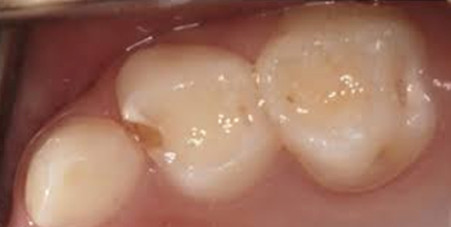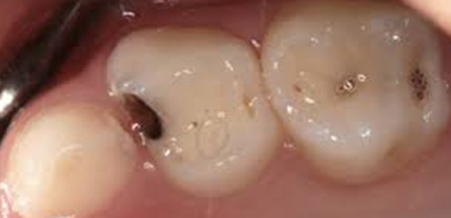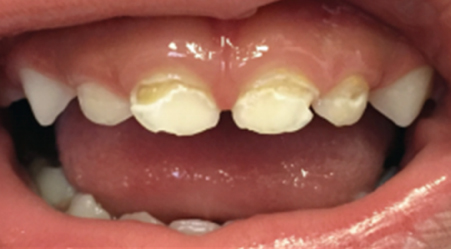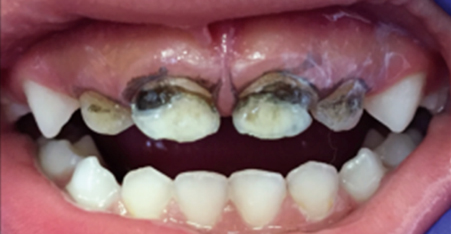Silver Diamine Fluoride
What is Silver Diamine Fluoride?
Silver Diamine Fluoride SDF is an FDA-approved topical solution that treats and prevents dental caries (tooth decay) and reduces tooth sensitivity.
It is made with two active ingredients:
- The SILVER is anti-microbial which kills bacteria and prevents the formation of new biofilm.
- The FLUORIDE prevents further demineralisation (softening) of the tooth structure.
SDF helps to harden the tooth structure that has been softened by tooth decay.
Treatment with SDF does not eliminate the need for restorative dentistry (ie fillings, crowns etc) but it is effective at preventing further tooth decay.
Who should have SDF?
We recommend using SDF in several situations including:
- Children who have extensive tooth decay (severe early childhood caries)
- Young children who have difficulty sitting still for treatment
- Special needs patients
- Children with carious lesions (cavities) that need to be treated over several visits
Advantages of SDF
- Provides immediate relief of tooth sensitivity
- Kills the microorganisms that cause cavities
- Hardens softened dentine making it more acid- and abrasion-resistant
- Does not stain healthy dentine or enamel
- Fast, easy and comfortable treatment
How is SDF applied?
- Teeth are gently cleaned
- Carious teeth are isolated, kept dry and all excess debris removed.
- A microbrush is dipped into a drop of SDF and applied for 1 minute.
- Any decayed area will stain black. Healthy tooth tissue will NOT stain.
- For best results repeat application is recommended. Your dentist will advise of this.
- Depending on the location and extent of the tooth decay as well as the child’s cooperation, other treatment may include placement of Fluoride varnish at the same visit.
- At a later date, fillings, crowns, extractions – with or without sedation or General Anaesthetic (GA) may be required.
Are there Risks or Side Effects to SDF?
One of the greatest benefits of SDF is that it carries very little risk and is generally free of side effects. The most prominent risk is a completely aesthetic one – blackening of the treated tooth. Stained tooth structure can be replaced with a filling or crown in the future- depending on child cooperation and parental wishes.
SDF can also temporarily stain any tissue surfaces it contacts: for example lips and gums; this staining is temporary and fades in a week or so as the skin cells shed naturally.
SDF will stain clothing, toys and work surfaces – all efforts will be made to avoid touching anything except the carious teeth, but this can be challenging especially with younger patients who are very giddy and unable to cooperate.
What does the tooth look like after SDF?
The area with tooth decay stains black – this can happen in a day or may take longer. The blackening is a sign that the SDF treatment is working.
Should some children not get SDF?
Children with allergies to Silver should not receive SDF.
Children who have sores or ulcers in their mouth are not good candidates for SDF.
If the tooth decay is into the nerve of the tooth, SDF should not be applied. If parents are unhappy with Black discoloration on their child’s decayed teeth, SDF will not be applied.
Benefits of Receiving SDF
- Relieves dental sensitivity
- Helps to stop tooth decay
- Helps to buy time for patients who are very young, fearful, or have special needs that may otherwise require Sedation or General Anaesthesia (GA) for traditional dental treatment.
Alternatives to SDF
No treatment: usually tooth decay progresses eventually causing pain or abscess formation.
Conventional dental treatment: fillings, crowns extractions etc- with or with out Sedation or General Anaesthetic.







 Back baby (primary) molars with tooth decay
Back baby (primary) molars with tooth decay Back baby (primary) molars with tooth decay
Back baby (primary) molars with tooth decay Front (primary) teeth with tooth decay
Front (primary) teeth with tooth decay Front (primary) teeth with tooth decay
Front (primary) teeth with tooth decay